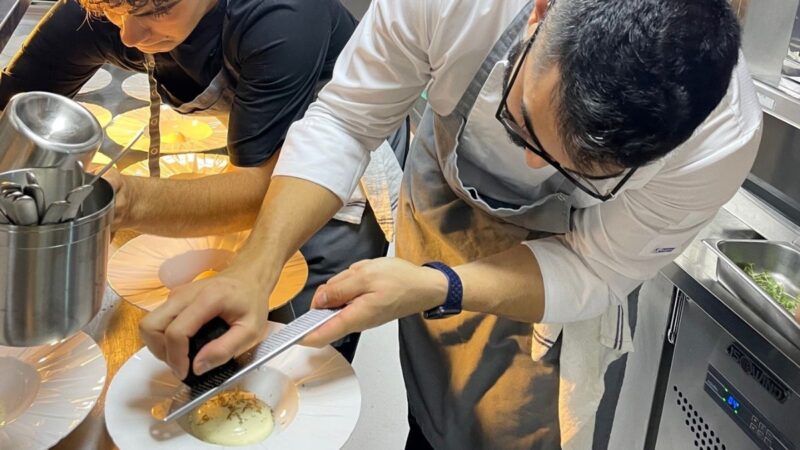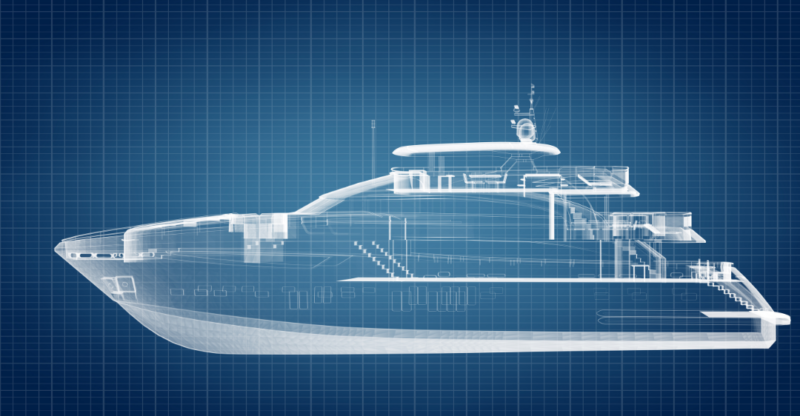Stepping up from a Chief Officer to a Captain on a superyacht is a significant career move, and one that rarely comes down to luck, but a solid skillset, proven experience, and strategic preparation.
For me personally, I spent four years as a Chief Officer before getting my first Captaincy. In our last Captain salary survey, 32% said they had been Chief Officer for 3 to 5 years before becoming a Captain, and another 36% had been in the role for 5 to 10 years.
I got my first role because I had obtained my Master3000 and got plenty of opportunities to cover the Captain’s duties while he was on leave or off on a business errand.
Start working towards your Master3000 as early as you can as it is rare for someone to get a Captain gig as soon as they get the ticket. Getting this allows you to be included on the yacht’s insurance, enabling you to move or relocate the vessel in the Captain’s absence. It provides a window of opportunity to start driving the yacht unsupervised, which is a significant plus on your CV.
Today, this can be a little bit more difficult with the majority of Captain roles being rotational, so less leave to cover, per se.
However, there are so many more ways and things you could be doing to maximise success and minimise the time spent sitting on the job search shelf in the run-up to looking for your first Captaincy.
Build longevity
I can’t stress the importance of longevity enough. It is crucial. Superyacht owners value stability and are looking for Captains who will remain committed for the long haul. Demonstrating reliability and dedication in previous roles will undoubtedly make you a more attractive candidate.
Maximise drive time
Although this is arguably and ironically a small part of the role, if you want to go from Chief Officer to Captain, then gaining as much drive time as possible should be a priority. Ensure you log all your manoeuvres, locations, and types of berths or anchorages. Anything unique or challenging should be noted too. Being able to say you have done manoeuvre X, 24 times over the last two years in conditions ranging from 20 knots across the bow in location Y is a far more powerful statement than just saying you’ve dropped anchor a few times.
Commit to continuous learning
In addition to securing your Master3000, take every opportunity to learn. Ask questions, take on more responsibility, and familiarise yourself with the bridge and all its systems. Show interest in other departments, such as the engine room, interior, and galley. This broad knowledge base will be invaluable when you become the primary decision maker onboard and help you gain the respect of the crew.
Being a Captain means wearing a lot of different hats so try and increase your skills in lots of areas. Improving your Microsoft Office skills, particularly Excel, is very easily done and a worthwhile investment in time for very little cost. Accounts and becoming more tech savvy are also areas you can improve in quite quickly and easily.
Finally, and this is the big one, invest in leadership training. The feedback from all our industry reports show that poor leadership and poor communication is a problem onboard the vast majority of yachts, whether it’s the Captain or HODs.
Network extensively
Although it may not come naturally to some people, if you want to go from Chief Officer to Captain then you need to put yourself out there. A lot of roles are filled through management companies, recommendations or on a ‘it’s who you know, not what you know’ basis.
It can take years to build strong relationships, so start early by attending events and webinars, participating in panels and surveys, making sure the management companies and owners (where possible) know who you are. Nurture relationships too. Don’t be that person who doesn’t message for four years, then sends an email feigning interest in the person with your CV attached.
Consult your current Captain
Remember that your current Captain is a valuable resource. Share your career aspirations with them and ask for advice on how to reach your goals. Ask if they can teach you critical skills like port clearance, paperwork, shore ops as well as the obvious ones like driving, picking up and dropping anchor, and manoeuvring the vessel in close quarters. This experience is fundamental to your development.
Perfect your CV and brush up on interview skills
The devil is in the detail when it comes to your CV. The first thing to do is create a Captain-specific CV. Not just your Chief Officer one with a few words changed. Think… what responsibilities does a Captain have and where have I had exposure to them? Talking about varnishing skills is irrelevant now. Accurately represent the experience you have and what you’re looking for.
Weighing up your options
When career progression onboard is not an option – perhaps because both captains on your current yacht are happy in their positions – you need to start looking elsewhere and realign your expectations with reality.
The first Captain position that comes your way could come from a yacht that is offering a full-time position with 60 days annual leave. For Chief Officers with no ties to family, this can be an easy decision. However, most Chief Officers are either in a relationship or possibly married with young children. Are you prepared to see less of your family for career progression? Is your partner going to be able to cope on their own with a young family for long periods?
This requires serious thought and a conversation with your other half, as once you’ve accepted, you need to commit to the period you have promised during the interview.
I speak to so many Chief Officers who are on time for time rotation onboard an 80m or 90m yacht and want to secure their first Captaincy on a 70m plus with time for time rotation. That just isn’t realistic a lot of the time, sadly, and often they are competing with Captains with years of experience. So carefully consider what you are prepared to compromise on.
Bespoke advice
If you’re actively looking to step up from Chief Officer to Captain and want a chat about your career steps or CV/interviewing advice, then drop our Director, Tim, an email on tim@quaycrew.com to schedule a call.





